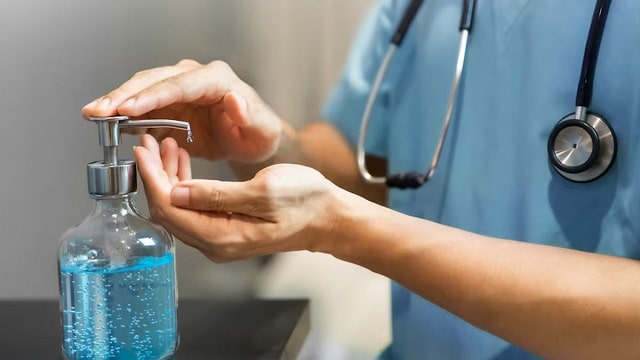What is an antiseptic?
Antiseptics are chemicals that can slow or stop the growth of microorganisms on the external surfaces of the body and help prevent infection. They are often used in hospitals and other medical settings to reduce the risk of infection during surgery and other procedures.
Antiseptics are also available over the counter to clean and treat minor wounds. Some may also be suitable as a soap substitute. Well, there are several types of antiseptics. Some are safe for you to use at home, while others are only suitable for use in a clinic or hospital.
Here are some common types:
· Alcohols, such as isopropyl alcohol and ethyl alcohol.
· Quaternary ammonium compounds.
· Chlorhexidine and other diguanides, for use before surgery.
· Antibacterial dye, to treat wounds and burns.
· Peroxide and permanganate, to disinfect the skin or for use as a mouthwash.
· Halogenated phenol derivatives. These are commonly used in medical-grade soaps and cleaning solutions.
· A quinolone derivative, which treats wounds and can be used as a throat lozenge.
Benefits of Antiseptics
Some of the benefits of using antiseptics include:
· For hand washing. Professional medical personnel use this liquid for scrubbing and washing hands in hospitals. However, for everyday purposes, there is no need to wash hands with antiseptic liquid. Washing hands with soap and water alone is enough to prevent infection. Check out Washing Hands is Better than Hand Sanitizer, Here’s Why.
· Disinfecting mucous membranes. You can apply an antiseptic to the urethra, bladder, or vagina to clean the area before inserting the catheter. This solution can also help treat infections in these areas.
· Cleansing the skin before surgery. You can also apply this liquid to the skin before any surgery to protect against harmful microorganisms that may be on the skin.
· Treating skin infections. You can buy over-the-counter antiseptics to reduce the risk of infection in minor cuts, burns, and wounds. Examples include hydrogen peroxide and rubbing alcohol.
· Treating throat and mouth infections. Some throat lozenges contain antiseptics to help relieve sore throats caused by bacterial infections.
Antiseptic Dosage
Dosage may vary depending on the type and use. Be sure to follow the directions for use on the packaging or as directed by your doctor.
Here are the general doses:
· As a throat lozenge
For children aged 12 years and above, 5 lozenges a day, while adults can use up to 10 tablets a day.
· As a mouthwash
The usual dose is 10 ml, twice daily.
· For scrub and hand washing
Dispense about 5 ml of product into your hands for one hand wash.
How to Use Antiseptics
Here’s how to use antiseptics based on type and use:
· Antiseptic candy
Put the candy in your mouth and let it melt slowly. Wait at least 30-60 minutes before drinking or eating anything.
· Mouthwash
Pour 10 ml of the product into a measuring cup. Drink and gargle the liquid for about 1 minute, then spit it out.
· For washing hands
After rinsing hands under running water, pour 5 ml of product onto hands and wash vigorously for 15 seconds.
· For skin preparation before surgery
Apply the product liberally to the area of skin to be surgically treated, then massage for at least 2 minutes and pat dry with a sterile towel.
Caution in Using Antiseptics
Stronger types can cause chemical burns or severe irritation if you apply them to your skin without first diluting them with water. Even antiseptics that you dilute can cause irritation if you leave them on your skin for a long time. This type of irritation is called irritant contact dermatitis.
If you use it at home, don’t use it more than once a week.
Also avoid using over-the-counter types for more serious wounds, such as:
· Eye injury.
· Human or animal bites.
· Deep or large wounds.
· Severe burns.
· Foreign objects stuck in the hole.
These are best handled by a doctor or urgent care clinic. You are also advised to see a doctor if you have treated the wound with the solution and it does not seem to be healing.
Store this compound well. Because it needs to be away from potential fire sources because it is flammable. Also, keep this medicinal product away from children. When using it, be careful not to let the antiseptic get into the eyes and nose.
Antiseptic Side Effects
Some side effects that can occur due to the use of antiseptics include:
· Skin irritation.
· Redness.
· Swelling.
· Mild stinging or burning sensation
· Allergic contact dermatitis.
· Dry skin.
· Some antiseptics can also stain skin, nails, and clothing.
· Hypersensitivity (rare).
Antiseptic Interactions
Drug interactions may occur when chlorhexidine is used at the same time as certain vaccinations. In addition, the use of povidone-iodine with lithium may increase the risk of thyroid disorders.
Contraindications of Antiseptics
Antiseptics should not be used in people with hypersensitivity. People with any allergies should also talk to their doctor or pharmacist before using these over-the-counter products.
Povidone-iodine antiseptic is not recommended for pregnant women (especially feminine products), breastfeeding mothers, and children under 6 months.

